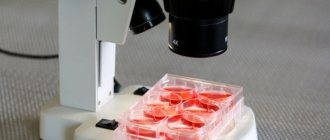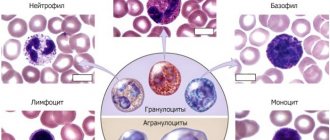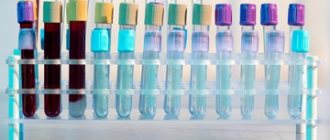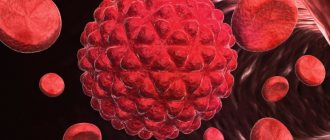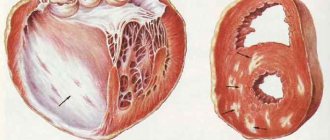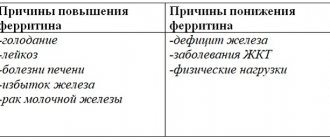What it is?
Hemoglobin is an organic red pigment. It is based on protein and iron. Hemoglobin is an important component of red blood cells. It allows you to saturate the blood with oxygen. Without hemoglobin, redox processes in all tissues of the human body cannot occur. The substance also performs a number of other functions, the list of which includes:
- carries out the addition of oxygen molecules from the alveoli of the lungs;
- transports oxygen to tissues in which there is an excess of carbon dioxide;
- carries oxygen to cells and captures carbon dioxide molecules;
- delivers carbon dioxide to the lungs;
- maintains acidity in the blood.
Entering the lungs along with blood cells, hemoglobin combines with oxygen. As a result of the reaction, oxyhemoglobin appears. Oxygenated blood is colored bright scarlet. It moves through the arteries.
Oxyhemoglobin saturates tissues with oxygen. As a result of the action, it breaks down, turning into carboxyhemoglobin. Blood containing unenriched hemoglobin is called venous.
The procedure of adding oxygen and carbon dioxide to hemoglobin is carried out thanks to iron ions. In this case, the transportation itself is carried out by red blood cells through the bloodstream.
Breathing and saturating all tissues with oxygen is an important element for maintaining life. If there is a deficiency of hemoglobin in the blood, this can cause oxygen starvation and the appearance of a number of unpleasant symptoms, including anemia.
Hemoglobin performs such a vital function as oxygen transport. This is achieved due to the fact that the iron atom in hemoglobin takes part in redox reactions. One of them occurs during the addition of an oxygen atom in the lungs. Hemoglobin then releases the molecule to the tissues that need it. Thus, the molecule carries oxygen throughout the body and ensures the respiration of all organs and tissues. It also performs reverse transport, capturing small amounts of carbon dioxide and delivering it back to the lungs for exhalation.
This function can be impaired when hemoglobin binds to other compounds. One example is the formation of carboxy- or methemoglobin. These forms are not able to carry oxygen; therefore, a state of hypoxia occurs in the body, which has a detrimental effect on absolutely all organs and tissues.
In its structure, hemoglobin is a complex protein that consists of an iron atom and globin protein. The molecule has 4 sites for oxygen binding. Thus, one hemoglobin carries four oxygen molecules. This produces oxyhemoglobin.
Based on the concentration of normal hemoglobin, as well as its pathological forms, we can conclude whether there is hypoxia in the body and the functioning of which organs it could affect.
Hemoglobin is, in fact, highly toxic. In various conditions that are accompanied by hemolysis, a large amount of this protein is released from red blood cells into the blood plasma. This can lead to tissue hypoxia and overload of the body with products of hemoglobin destruction. In this case, the person will need urgent help, otherwise complications may include acute jaundice, blockage of the renal tubules, tissue necrosis, porphyria and other serious conditions.
The amount of hemoglobin in the human body can be either increased or decreased. A deficiency usually occurs when the number of molecules themselves decreases. An increased amount occurs with increased breakdown of red blood cells and some other conditions.
Functional purpose of hemoglobin
Free or plasma hemoglobin is the main protein in human blood.
It is part of red blood cells and plays a major role in the transfer of oxygen to tissues. Additionally, it accumulates carbon dioxide molecules, clearing the plasma of accumulated decay products, stimulating the process of regeneration of cells of internal organs and systems. In tests, free hemoglobin is designated by the formula Hb. With its deficiency, the human body experiences oxygen starvation. This manifests itself in exacerbation of chronic diseases, deterioration of well-being, disruption of the brain and nervous system. Even with a deviation of 15-25 units, a person feels weak, drowsy, and complains of decreased concentration and memory.
How is hemoglobin level determined?
To determine your hemoglobin level, you will need a complete blood test. The referral is given by a therapist. The study allows you to find out other indicators, the list of which includes:
- leukocytes;
- platelets;
- ESR.
In order for the information to correspond to reality, it is necessary to follow the rules. Blood donation is carried out only in the morning. It is at this time of day that other factors do not influence the value of the indicators.
It is forbidden to eat food before taking the test. Food can affect hemoglobin levels. So, if a person eats fatty foods, the value of the indicator can greatly decrease.
24 hours before the test, you must stop smoking and drinking alcohol. If a person cannot cope with addiction and is unable to give up cigarettes for 24 hours, the laboratory assistant should be informed about this. Nicotine affects the composition of the blood. It may lead to a false hemoglobin level result.
After the blood is donated, a test will be performed in the laboratory using special instruments. In regular clinics, an advanced analysis takes about 12 hours. If there is a need to urgently obtain information about your hemoglobin level, you can use a rapid test. It will be ready within 5-10 minutes. Additionally, pharmacies sell special devices that make it possible to find out the number of leukocytes, sugar and hemoglobin levels in the blood at home.
Norm of glycated hemoglobin in diabetes
Since in patients with diabetes the composition of biological fluids (blood and urine) is somewhat different from healthy patients, hemoglobin also has its differences - the norm is determined by the nature of the disease, its course, and specifics. There is a separate test for glycosylated protein, without which it is impossible to determine the composition of the blood and prescribe intensive therapy for diabetes mellitus. Such laboratory testing is considered mandatory, even if the patient is only suspected of having this terrible and already incurable disease.
The norm of glycated hemoglobin in women is 4.6-6.5% of the total sugar level. If the real indicator reflects the limits of 6.5-6.9%, doctors suspect the presence of diabetes mellitus in a man or woman; pregnant women are also no exception. Patients at risk are taken under medical supervision, and a typical laboratory test must be repeated every three months on an empty stomach.
Find out what the testosterone level is in women.
Hemoglobin norm in women (table)
The level of hemoglobin in the blood of women depends on lifestyle, individual characteristics of the body, and age. The value of the indicator ranges from 110-160 g/l. So, for a girl under 12 years of age, 105-150 g/l is considered normal. In a woman over 50 years of age, the value increases to 120-160 g/l. The menstrual cycle, pregnancy and menopause can also affect the amount of hemoglobin in the blood.
The level of hemoglobin in the blood of an adult is a relatively stable indicator. The amount of the substance in a woman’s blood is lower than that of a man. This happens because female sex hormones are able to weakly stimulate the formation of red blood cells. The small amount of hemoglobin is also affected by the fact that a woman has less muscle mass. To maintain a normal state, so much oxygen is not required.
Experts have identified a number of natural factors that can lead to an increase or decrease in the amount of hemoglobin. The list includes:
- Playing sports. If a woman engages in active sports, the number of red blood cells in the blood increases. The hemoglobin level reaches the upper limit of normal.
- Menstruation. During the first few days of menstrual bleeding, the amount of hemoglobin in the blood decreases to 110 g/l. This will not be a deviation. Within a week after your period ends, the reading will return to normal and be 120 g/L or higher.
- Nutrition. Your daily diet needs to be carefully monitored. If a woman is prone to iron deficiency anemia, drinking large amounts of tea, coffee, dairy and flour products will lead to a decrease in hemoglobin below the permissible norm. All of the above foods become a natural obstacle to the absorption of iron by the body.
- Smoking. If a woman is an active smoker, the amount of hemoglobin in the blood will be increased. In this way, the body compensates for the lack of oxygen in the lungs. Despite the fact that the analysis shows a large amount of iron-containing protein, a person may develop oxygen starvation.
Hemoglobin is increased
The amount of hemoglobin must be monitored as carefully as possible. If the indicator value increases, blood viscosity increases. This leads to difficulties in collecting analyses. An increase in hemoglobin may indicate the presence of a number of diseases, the list of which includes:
- diabetes;
- Congenital heart defect;
- heart or pulmonary failure;
- intestinal obstruction;
- increased number of red blood cells in the blood;
- presence of burns.
Dehydration can also lead to an increase in hemoglobin levels. In this case, a high level of the indicator is observed, but it is false. To combat the problem, it is necessary to adjust the amount of fluid consumed or eliminate the problem leading to dehydration. When the pathology can be eliminated, the hemoglobin level will return to normal.
The reason for the increase in the value of the indicator may also be living at a high altitude above sea level. In this case, the increase in the value of the indicator occurs due to a decrease in the amount of oxygen entering the body.
If serious deviations from the norm are detected, additional studies are required. They are sent to determine the cause of the violation. An increase in hemoglobin levels is only a symptom. It is useless to treat him.
Myoglobin norms by age
Normally, myoglobin is present in the bloodstream in minimal quantities or not detected at all. The methods used vary in different laboratories, so the norm is always indicated on the result form along with the data obtained. Averaged is the range from 0 to 70.0 µg/l.
In modern laboratories, the determination of myoglobin in the blood is carried out using immunoturbidimetry. The essence is to assess the degree of agglutination of myoglobin and antibodies to it with latex particles. The interaction of myoglobin and antibodies changes the sample parameters, which are recorded on special equipment. In this case, the normal range is from 12.0 to 92.0 μg/l.
Causes of elevated hemoglobin
Hemoglobin is considered elevated if it is 20-30 points higher than the upper limit of normal for the corresponding age. However, you should still know your individual hemoglobin level, since for some women the upper generally accepted limits will be considered abnormal.
Minor fluctuations in hemoglobin concentration occur throughout each day. They are caused by food intake, stress, exercise and other factors. A significant increase in hemoglobin in women rarely occurs. Conditions in which there is not enough hemoglobin occur more often than those in which it is found to be 160 g/l or more.
The amount of hemoglobin can increase for physiological and pathological reasons. For physiological reasons, the concentration of this substance normalizes on its own and does not require any treatment. Physiological factors, for example, include eating foods rich in iron or taking iron-containing medications. When the medication is discontinued, the hemoglobin level will immediately return to normal.
An increased amount also occurs in people who live in the mountains. Hypoxic conditions force the body to produce more hemoglobin to provide cells and tissues with sufficient oxygen. This condition is not considered a pathology.
An increase in the amount of hemoglobin occurs when the blood thickens and its circulation deteriorates. In this case, the cells lack oxygen, and blood clots often form in the vessels, which lead to other diseases.
Elevated hemoglobin levels are often found in diabetes mellitus, heart and lung failure, and heart disease. If an elevated level of this protein is detected, it is imperative to continue a full examination of the patient to identify the cause of the pathology. In some cases, it is enough to repeat the analysis every other day or under other circumstances, since it may turn out that this is a temporary physiological increase.
If an increased amount of hemoglobin is detected, it is necessary to treat the underlying cause, and not the symptom itself. Often this turns out to be quite difficult, since a chronic disease leads to a similar condition. In this case, the patient is prescribed a diet that limits the intake of iron. An extremely dangerous condition is considered when the hemoglobin level rises above 180 g/l.
During menopause
The period of menopause in women is characterized by significant hormonal changes. Many processes are disrupted, including the formation of red blood cells, chronic diseases worsen, which negatively affect hematopoiesis.
During menopause, the hemoglobin norm in women increases: 115-160 g/l. After 50 years, a woman may experience both anemia and excess iron-containing protein in the blood.
Depending on the causes of anemia (lack of folic acid, iron in the diet, etc.), the disease can be eliminated with the help of iron supplements, a course of vitamins and good nutrition.
During menopause, an increase in hemoglobin is manifested by dizziness, headaches, a feeling of drowsiness and lethargy. If high levels of iron are detected after 50-60 years of age, urgent treatment is necessary, since at this age the risk of developing diseases of the cardiovascular system increases.
During menopause, it is necessary to regularly conduct a general blood test in order to monitor not only the level of blood cells, but also other indicators that worsen a woman’s well-being during this period.
How to lower hemoglobin?
The following recommendations will help lower hemoglobin:
- Dieting. Limit foods that contain large amounts of iron. These include poultry, offal, and buckwheat. Dishes that worsen the rheological properties of the blood, increase its viscosity and cholesterol levels are subject to restrictions. Among them are fatty pork, butter and some other products. It is recommended to increase the amount of fresh vegetables, lean fish and protein foods in the diet. Semi-finished products and gastronomic food are completely excluded. A woman should not drink soda, eat fast food, canned food and other similar products.
- Taking antiplatelet drugs. Medicines in this group are prescribed only by a doctor, but they are very effective and can significantly improve the rheological properties of the blood. They reduce the risk of blood clots, reduce stagnation, and improve microcirculation.
- Elimination of the underlying disease. An increased level of hemoglobin is caused by some reason. Without eliminating this cause, it will not be possible to return hemoglobin to normal levels. A complete comprehensive medical examination will help to identify the underlying disease.
Many people believe that a high hemoglobin level is good. This is wrong. Hemoglobin values above the permissible norm lead to blood thickening, deterioration of microcirculation and metabolic disorders, which negatively affects the functioning of many internal organs and blood vessels. Fluctuations in hemoglobin are allowed only within limits that correspond to the patient’s age.
Causes of low hemoglobin
Low hemoglobin levels are much more common than high ones. This condition is typical for women of different ages, including patients over 50 years of age. Iron is not synthesized in the human body, so the body's need for this trace element is satisfied through food or medications. Thus, with insufficient iron intake, a person will suffer from anemia and low hemoglobin.
Another reason that leads to a decrease in the concentration of this protein is a lack of vitamins necessary for its synthesis. These include folic acid, vitamin B12 and ascorbic acid.
Thyroxine, a thyroid hormone, plays an important role in the synthesis of hemoglobin. It is necessary for the complete absorption of iron in the intestines and, accordingly, its entry into the blood. Lack of thyroxine leads to a decrease in the amount of hemoglobin in the blood. Diseases of the gastrointestinal tract, such as gastritis or mucosal ulcers of any localization, can also complicate the absorption of microelements. With such pathologies, the mucous membrane becomes thinner, and the iron is poorly absorbed. A reduced amount of hemoglobin leads to a condition such as anemia or anemia. Doctors distinguish several degrees of anemia:
- Mild degree. Hemoglobin level is more than 90 g/l. Among the symptoms, the woman notes fatigue, lethargy, and decreased performance. Mild anemia is easily corrected with proper nutrition.
- Average degree. The hemoglobin level is 70-90 g/l. There is general weakness, loss of strength, dizziness, tinnitus, digestive problems, cracks in the corners of the mouth.
- Severe degree. The hemoglobin level drops below 70 g/l. The body experiences significant hypoxia - headaches, spots before the eyes, increased shortness of breath and palpitations appear. Lack of oxygen leads to disruption of the functioning of many organs, and also affects the general well-being of a person, leading to sleep disturbances, pale skin, loss of appetite, and exhaustion.
The reasons why a decrease in hemoglobin levels may occur are as follows:
- Unbalanced diet. Hemoglobin is synthesized in the human body from iron with the participation of certain vitamins. To have enough iron in the blood, you need a sufficient amount of iron. You can get it from red meat, liver, legumes, and nuts. Plant foods contain no less iron. Quite often, vegetarians who unwisely limit their diet suffer from anemia. It should be remembered that iron absorption is inhibited by coffee, tea and chocolate.
- Blood loss. Menstruation or injuries that were accompanied by blood loss lead to a decrease in the amount of hemoglobin in the blood. This also includes postoperative periods and cases of exacerbation of hemorrhoids. We should also not forget that patients may have hidden blood loss due to ulcers of internal organs, cirrhosis of the liver, as well as other diseases that destroy the walls of blood vessels.
- Infestation with parasites. Worms that enter the human body most often attach to the intestines, damaging the mucous membrane and leading to impaired absorption of nutrients. In addition, they use vitamin B12 and reduce its amount in the human body. In case of unreasonable fatigue and decreased performance, it is recommended to undergo examination for worms.
- Prolonged stress. Strong emotional experiences negatively affect the functioning of internal organs and also lead to a decrease in appetite. After some time, there is a possibility of developing anemia.
- Hypothyroidism. Proper functioning of the thyroid gland ensures the health of the entire body and the coordinated functioning of other organs. With insufficient production of hormones, in particular thyroxine, iron absorption deteriorates and anemia occurs.
- Blood diseases. Blood diseases with impaired red blood cell synthesis or malignant tumors lead to a decrease in the amount of hemoglobin in the blood.
- Diseases of the gastrointestinal tract. Violation of the integrity of the gastrointestinal mucosa inhibits iron absorption and hemoglobin synthesis.
- Sedentary lifestyle.
How to increase hemoglobin?
The condition of a patient with anemia can be improved with diet or medications. However, it is very important to find out the cause of this condition. For example, if iron absorption is impaired, additional intake from vitamin complexes will be ineffective. If possible, it is imperative to eliminate the main cause of low hemoglobin, then you will not have to resort to symptomatic treatment.
To replenish hemoglobin, it is necessary to choose dietary supplements or medications that contain not only iron, but also folic acid, vitamin B12 and vitamin C. Treatment is carried out in a course, since periodic use will not give the desired effect. The selection of the drug and its dosage are selected by the doctor individually for each patient, and also taking into account the severity of the problem. There are special iron-based preparations that can quickly replenish the deficiency in the body, but they are not suitable for self-medication. During therapy, control tests are carried out to assess the dynamics of improvements. For children with anemia, pharmacies sell hematogen - a sweet toffee that resembles chocolate. It helps increase the number of red blood cells and increase hemoglobin levels, replacing real chocolate while it is prohibited during anemia.
It is very important to constantly maintain hemoglobin levels within normal limits. This is one of the important indicators that ensures the proper functioning and health of the entire body. A change in hemoglobin concentration, both in one direction and the other, affects all areas of a woman’s health - psycho-emotional state, physical, as well as appearance. If the problem is not severe, it is enough for a woman to adhere to proper nutrition in order to return the hemoglobin level to normal limits and prevent possible complications.
Symptoms of decreased and increased hemoglobin
You can suspect a decrease or increase in the level of hemoglobin in the blood without taking a test. Lack of the substance is manifested by a number of specific symptoms. They depend on whether hemoglobin is increased or decreased. A decrease in the value of the indicator is indicated by:
- the appearance of tinnitus;
- if there is a sharp change in temperature, convulsions may occur;
- the woman looks pale, her skin becomes dry;
- hair and nails often break;
- there is a loss of appetite, and taste preferences are disturbed;
- menstrual irregularities occur.
If a woman has low hemoglobin levels, she may experience sleep problems. Against the background of the pathology, dizziness often develops. Sometimes migraines appear. With sudden movements, darkening of the eyes may occur.
An increase in hemoglobin levels also makes itself felt. It manifests itself:
- drowsiness;
- decreased vision;
- loss of appetite, pallor of the skin and its bright color in some places;
- problems with urination;
- increased fatigue.
Often the symptoms of a decrease and an increase in iron-containing protein in the blood are similar. Therefore, it is impossible to determine the indicator only from them. Laboratory tests are mandatory. Based on their results, treatment can be prescribed.
Properties of myoglobin
Myoglobin has unique abilities:
- Hemoglobin binding,
- Creating a custom buffer
- 1.0 grams of myoglobin can add 1.34 ml of o2,
- The ability to store oxygen reserves until the near future.
If a situation occurs in the body and the myocardium does not receive oxygen, then this supply of oxygen in myoglobin provides the heart muscle for 4 seconds.
When disruptions occur in the blood flow of the myocardium, or damage occurs in systole, then hemoprotein will prevent oxidation of the body and provide normal conditions for all processes in the body.
The work of myoglobin in this provision is short-term.
When skeletal muscle myocytes, or cardiomyocytes, are damaged, myoglobin is released into the bloodstream.
During myocardial infarction, the level of myoglobin in the blood depends on the degree of damage to the heart muscle by necrosis. The more the heart muscle is affected, the higher the muscle chromoprotein index in the blood.
When a myoglobin test is repeated during a heart attack (after 2-3 hours), then using this analysis the degree of destruction of the heart muscle can be determined.
Also, an increase in the level of creatine kinase (CF fraction) may indicate a heart attack.
Normalization of hemoglobin levels
If there is a deviation from the norm, the problem must be dealt with. First of all, find out the causes of the problem. If the pathology is caused by the presence of a disease, it is treated. If adequate therapy is carried out, the hemoglobin level will return to normal after the disease is eliminated.
If a woman is diagnosed with anemia, the specialist will prescribe a medicine containing iron. The course and dose are determined individually. Iron-containing preparations are available in the form of tablets or ampoules. Typically, the first results of therapy appear after 20 days of treatment. In severe cases, red blood cell transfusion is prescribed. The action is performed in a hospital setting.
With increased hemoglobin, the first step is to adjust the diet. If changing the diet does not give the desired result, medication is prescribed. The following can help in getting rid of the problem:
- actiferrin;
- phenol with vitamin B9;
- green manure;
- iron gluconate.
The course of treatment usually lasts 2 weeks. During this period of time, normal hemoglobin levels are restored.
